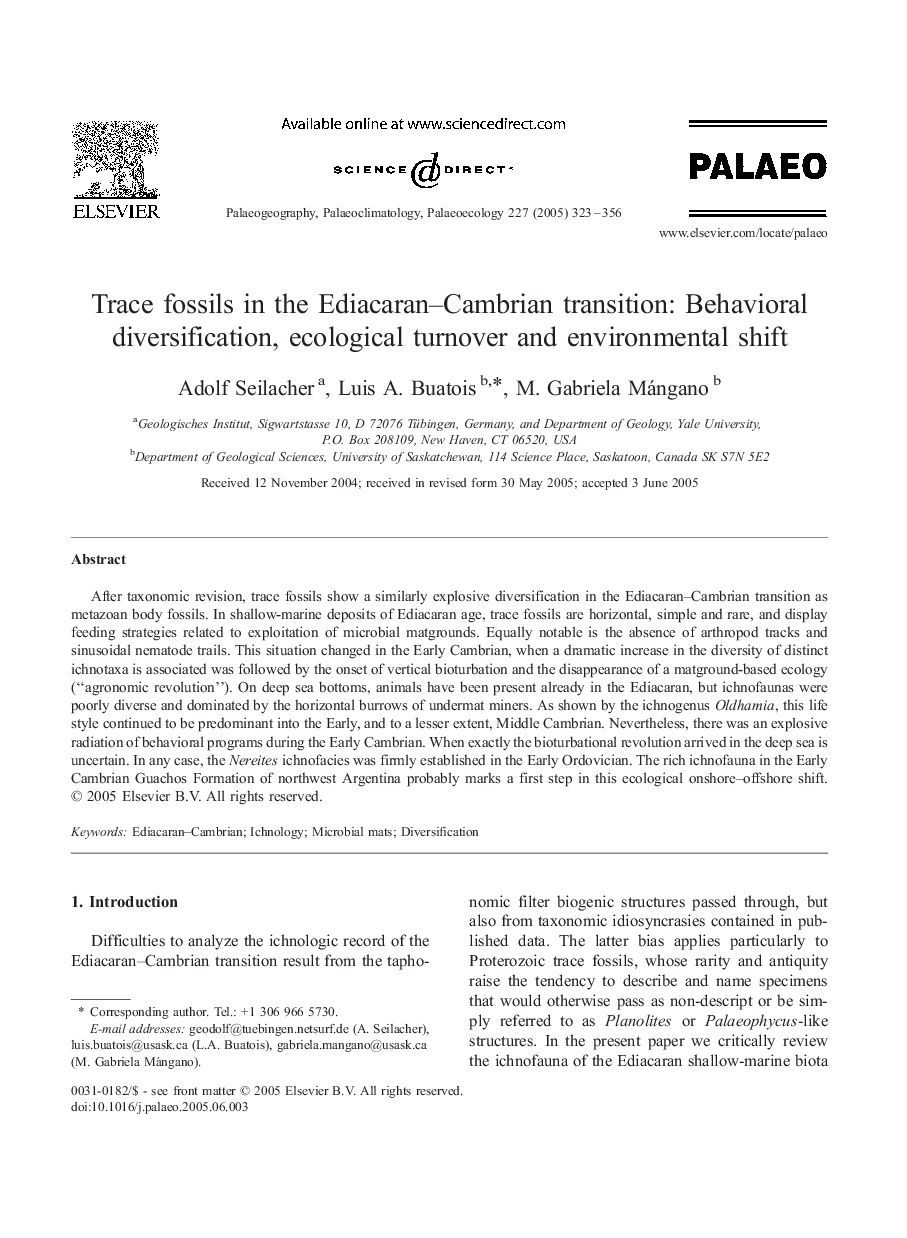| Article ID | Journal | Published Year | Pages | File Type |
|---|---|---|---|---|
| 9462918 | Palaeogeography, Palaeoclimatology, Palaeoecology | 2005 | 34 Pages |
Abstract
After taxonomic revision, trace fossils show a similarly explosive diversification in the Ediacaran-Cambrian transition as metazoan body fossils. In shallow-marine deposits of Ediacaran age, trace fossils are horizontal, simple and rare, and display feeding strategies related to exploitation of microbial matgrounds. Equally notable is the absence of arthropod tracks and sinusoidal nematode trails. This situation changed in the Early Cambrian, when a dramatic increase in the diversity of distinct ichnotaxa is associated was followed by the onset of vertical bioturbation and the disappearance of a matground-based ecology (''agronomic revolution''). On deep sea bottoms, animals have been present already in the Ediacaran, but ichnofaunas were poorly diverse and dominated by the horizontal burrows of undermat miners. As shown by the ichnogenus Oldhamia, this life style continued to be predominant into the Early, and to a lesser extent, Middle Cambrian. Nevertheless, there was an explosive radiation of behavioral programs during the Early Cambrian. When exactly the bioturbational revolution arrived in the deep sea is uncertain. In any case, the Nereites ichnofacies was firmly established in the Early Ordovician. The rich ichnofauna in the Early Cambrian Guachos Formation of northwest Argentina probably marks a first step in this ecological onshore-offshore shift.
Related Topics
Physical Sciences and Engineering
Earth and Planetary Sciences
Earth-Surface Processes
Authors
Adolf Seilacher, Luis A. Buatois, M. Gabriela Mángano,
